Unit 19: Photo Story
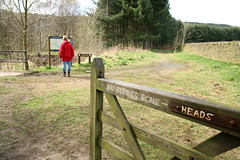
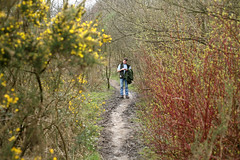
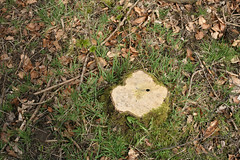
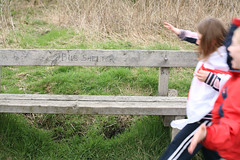
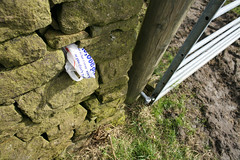
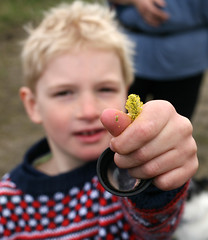
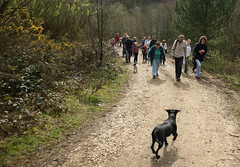
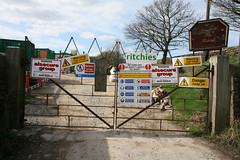
Apologies for the relatively small images, but I've spent enough time on these as it is! The Flickr set can be viewed here, and they can be run as a slideshow from here.
A weblog following my progression towards HND Photography in 2005 & 2006








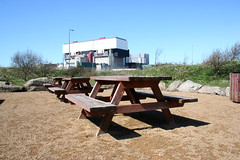
Today, I finally manage to shake the lethargic monkey and make the trip to Heysham to properly kick off my Unit 25 project.
But I take a wrong turn in
Back on the right track, I take another early turn and end up on the road to Middleton. But I get my bearings by working out I'm on the wrong side of the golf course. I find
The parking space I head for is closed (though I later realise that it's not the parking space I thought it was). But this leads to the most bizarre place of the day. A landscaped area with ponds (replete with 'danger deep water' signs and life buoys), picnic tables and bizarre sets of wooden posts - all facing the southern end of the Nuclear Power Station and it's perimeter fence - and nothing else, no view, nothing. I'm not sure whose idea this was, or who paid for it, but it is very odd. The smell of stale dog shit doesn't help - people from the nearby holiday camp clearly use it to walk their dogs, and ignore the 'dog waste' bin near the entrance. Perhaps even more strange are the (not very) floral wooden arches scattered here and there.
I take a good few photos here, focusing on the picnic tables, and the host of daffodils that top the odd earthwork mounds (which thrive with nettles - ouch!). I quickly leave when the place becomes populated with chav children.
After consulting the map, I notice that the car park/nature reserve on the map is not here, but further along the lane. I head back for this and park up. More picnic tables, and a watch tower, up atop a hill. I use the tables to eat my lunch.
Looking at the notice board inside the car park, it's clear that this nature reserve has been paid for by British Energy, since their branding is everywhere.
On top of the hill, the observation tower is closed. Permanently by the looks of things - the entrance is stopped up with cemented breeze blocks. It looks forever like it belongs at a prison, but I imagine that in days gone by that it was used to watch goings on in the nature reserve. And I imagine that it's now been closed to prevent the watching of goings on at the power station, which is clearly visible from here.
I take a few shots in and around here, including the access road to the power station. At the foot of a set of steps, there's a sad and neglected looking display board with info about the reserve. More 'Nuclear Power'/'Nature Reserve' branding.
I wander around the reserve for a bit, but the only wildlife I spot are rabbits, hopping here and there. And there's the sound of the crackling power lines overhead. I use up a lot of memory and only have a few shots left when I remember that I also wanted to visit (old) Heysham village too.
So I head off there. This is a nice but neglected place - it reminds me of parts of the Lands End, lots of twisty-turny narrow lanes and old cottages. Eventually, I park up and head out to the
Paying a brief visit to the heritage centre (one room with a shop, natch), there's a large feature on JMW Turner's painting of 1818. I wanted to find this view, but I suspect it points in the opposite direction from the power station, given that it has a view of the
I find the rock cut graves and St Patrick's Chapel. And I can see that Turner's painting was situated along here, orientated as I suspected. They're filled with dirty water and torn-up flowers, so a few shots are in order: juxtaposing rock cut graves, flowers and dirty water has mixed metaphors for this place. The plans for deep geological disposal - a grave for the nuclear waste. The dirty water, that which is sucked up to cool the nuclear reactions a kilometre or two away, and affecting the water in turn if you believe some commentators. And the flowers - the fact that Heysham is good at winning prizes in the '
Later, I wander down to the water's edge, and the Power Station comes into view again. I shoot with the rocks in the foreground - striations on the rocks - I wanted to factor in the geology and the coast, since the glacial speed of the decay of nuclear waste is a strong metaphor in amongst all this comparably pathetic short-termism of nuclear power. And the coast because coastal erosion is a huge issue that will render these places redundant eventually, and create big headaches for future waste storage.
To the North, I'm not sure if it's the smokestacks of Sellafield that are in view, or other works at Barrow in Furness. They look distant enough to be Sellafield, but I'm not sure. What I can see clearly though is the off-shore windfarm that I've head about, right out into the
And with that, I run out of memory. I head away with some good shots in the bag, and plenty of food for thought.
Photos will be posted on Flickr when they are processed.
I realise that I have only blogged twice about my Unit 25 project these past few months. That’s probably because not much photography has been undertaken, beyond a preliminary shoot.
In the meantime, the decision about how to dispose of existing waste has yet to be arrived at, and my exhibition will be complete before then.
I am interested in ideas surrounding the use of landscape, and its ownership: since most of the proposed storage sites were MOD, one would envisage that the government has sole say in whether or not waste is stored there. At the moment, a lot of waste is stored on the coast at places like Sellafield, where power stations also reside. Yet long term storage is not an option here, due to coastal erosion making these sites unviable. I have considered that issues of geology and coastal erosion are handy metaphors, since a lot of the waste loses its radioactivity over thousands of years, it’s perhaps better measured on this time scale.
The whole concept of Nuclear Power demonstrates the crass, short-term concerns of capitalist economics. Power stations have a shelf-life of 60 years, yet the waste produced is dangerous for aeons. And of course, the real issue that’s being missed is why we need to use so much energy in the first place – and how much is already being wasted.
So how do I get this across? Good question. I have spent time identifying sites to visit – and only visiting those sites would yield photographs. I think I have moved on from the idea of ‘chocolate box’ images, and the concept will be more important than the actual photos themselves.